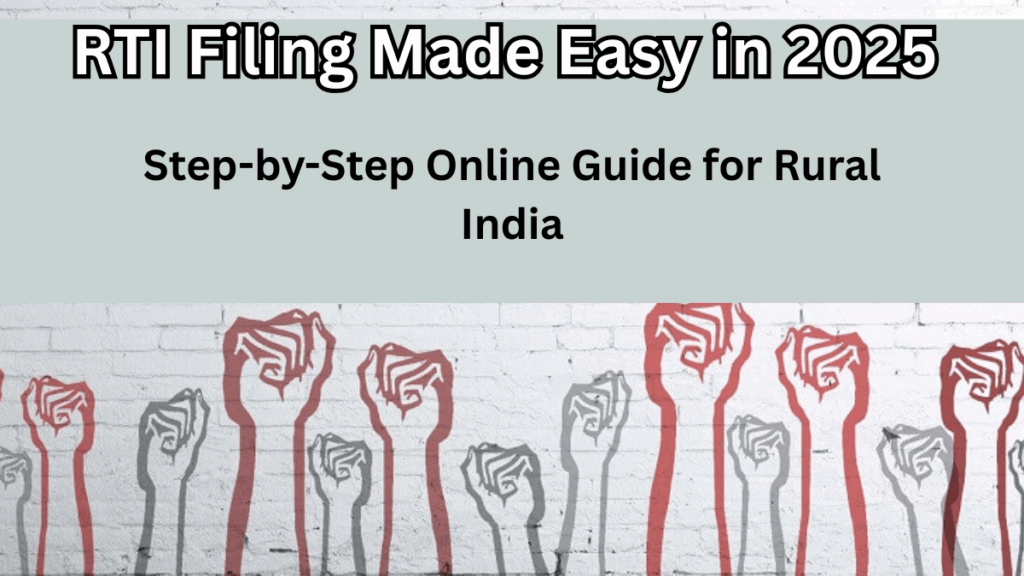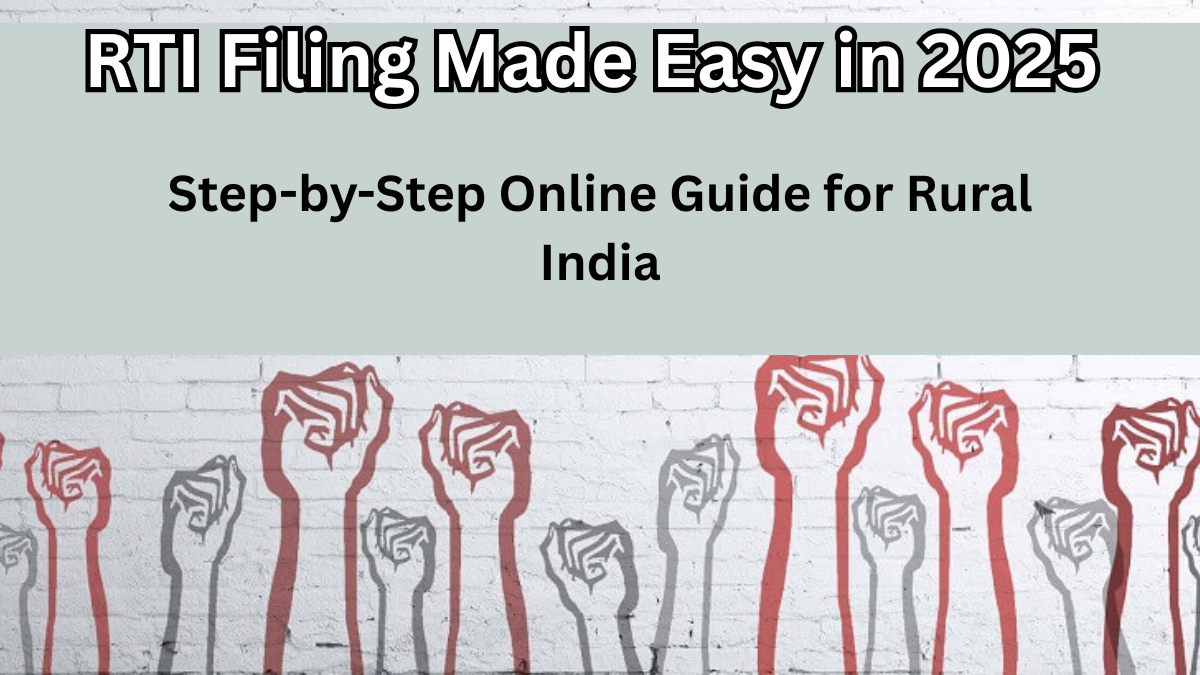The Right to Information (RTI) Act has been a game-changer for Indian citizens, empowering them to demand transparency and accountability from government authorities. In 2025, filing an RTI has become even more accessible, especially for rural citizens. Whether you want to inquire about local development projects, welfare schemes, or public spending, knowing how to file RTI online in 2025 can make the process hassle-free and quick.
This guide simplifies the entire process, ensuring that citizen rights are exercised effectively, even from the remotest parts of India.

Why RTI Matters for Rural Citizens
RTI isn’t just about asking questions; it’s about holding authorities accountable. For rural citizens, this means:
-
Tracking how government funds are used in their villages
-
Ensuring fair implementation of welfare schemes
-
Gaining information on land records, employment programs, and social benefits
By knowing how to file RTI online in 2025, villagers can bridge the information gap between them and authorities.
Step-by-Step Guide to File RTI Online in 2025
Step 1: Visit the RTI Online Portal
-
Go to www.rtionline.gov.in.
-
The portal is now optimized for mobile use, making it easier for rural citizens with smartphones.
Step 2: Register Yourself
-
Click on “Submit Request.”
-
Fill in your details such as name, contact number, and email.
Step 3: Choose the Department
-
Select the ministry or department you need information from (e.g., Rural Development, Education, etc.).
Step 4: Write Your RTI Query
-
Be clear and concise. For example: “Please provide details of funds allocated for road construction in XYZ village for 2024-25.”
Step 5: Pay the Fee
-
Application fee: ₹10 (payable via debit card, credit card, UPI, or net banking).
-
BPL (Below Poverty Line) applicants are exempted from the fee.
Step 6: Submit & Track
-
Submit your application and note the registration number.
-
Use this number to track your RTI status online.
Key Features of RTI Filing in 2025
Feature |
Details |
|---|---|
Mobile-Friendly Access |
Optimized portal for rural users |
Multiple Payment Options |
UPI, cards, and net banking supported |
BPL Exemption |
Free filing for Below Poverty Line citizens |
Multilingual Support |
Applications can be filed in local languages |
Common Issues Faced by Rural Citizens
Despite the improvements, some challenges remain:
-
Limited internet connectivity in remote villages
-
Lack of awareness about citizen rights
-
Difficulty in drafting effective RTI queries
To counter these, the government has introduced awareness programs and helplines to assist rural citizens in the RTI process.
Tips for Drafting a Strong RTI Application
-
Be Specific: Ask one clear question instead of multiple unrelated queries.
-
Keep it Short: Long and complex questions may lead to delays.
-
Mention Timeframe: Example – “Provide details of fund allocation for the financial year 2024-25.”
Final Thoughts
RTI is more than a law – it’s a tool for empowerment. With online filing made simple in 2025, rural citizens now have a stronger voice. Understanding how to file RTI online in 2025 can help bridge the gap between the government and the people, ensuring true transparency.
FAQs
1. Can rural citizens file RTI applications in local languages?
Yes. The RTI online portal now supports multiple regional languages to make the process easier for rural applicants.
2. Is there a fee for filing an RTI?
A nominal fee of ₹10 applies, but BPL citizens can file for free by providing their BPL proof.
3. How long does it take to get a response to an RTI application?
Authorities are required to respond within 30 days of receiving the application.
4. Can I track my RTI status after filing?
Yes. Once filed, you will receive a registration number, which can be used to track the status of your application online.
Click here to learn more
